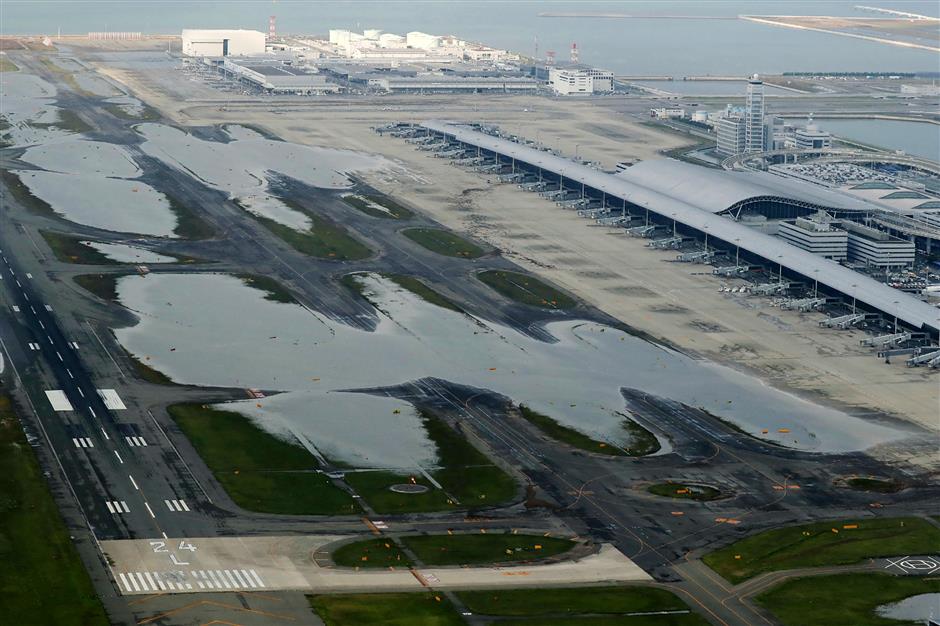Japan evacuates major airport after typhoon wreaks havoc

An aerial view from a Jiji Press helicopter shows flooding at the Kansai International Airport in Izumisano city, Osaka prefecture on September 5, 2018, after typhoon Jebi hit the west coast of Japan.
A major airport that was cut off when a huge typhoon smashed through its sole access road was being evacuated Wednesday, as Japan grappled with devastation caused by its most powerful storm in a quarter of a century.
Boats were ferrying stranded passengers from Kansai International Airport — one of the country's busiest — after thousands of people were forced to spend the night in the partially flooded facility.
At least 10 people were killed, and hundreds more injured by Typhoon Jebi as it raked through the major manufacturing area around Osaka — Japan's second city — wrecking infrastructure and destroying homes.
Winds up to 216 kilometers (135 miles) per hour ripped off roofs, overturned trucks on bridges and swept a 2,500-ton tanker into a bridge leading to the airport, the region's main international gateway and a national transport hub.
The damage to the bridge left the artificial island cut off, stranding 3,000 travelers and additional staff overnight.
Runways were flooded as high waves washed into the facility on Tuesday, knocking out electricity and inundating buildings.
By Wednesday lunchtime several hundred people had been ferried to Kobe on a specially chartered boat, but more than 2,000 were still awaiting rescue.
There was no indication yet when the airport, which runs over 400 flights a day, might reopen.
"We had a blackout so there was no air conditioning. It was hot," a woman told public broadcaster NHK after being ferried to Kobe.
"I'd never expected this amount of damage from a typhoon."
Government spokesman Yoshihide Suga said the death toll in the storm stood at 10, with 300 people injured.
Prime Minister Shinzo Abe, tweeting on his official account, said the government was working to get the airport back online.
"We will do our best to get the airport functioning again," he said.
He said 2.4 million households had lost power in the storm, with service restored to only half by Wednesday morning.
"We continue to make utmost efforts to respond to disaster damage and restore infrastructure," he added.
Trail of destruction
More than 1.2 million people had been advised to leave their homes as Jebi approached the Kansai area — Japan's industrial heartland. Around 16,000 people spent the night in shelters, local media said.
Japan is regularly hit by powerful typhoons in the summer and autumn, many of which cause flooding and landslides in rural areas.
Jebi appears to have caused damage to the region's infrastructure on an unusual scale.
In the tourist magnet of Kyoto — home to ancient temples and shrines — it brought down part of the ceiling of the main railway station, while in nearby Osaka, the high winds peeled scaffolding from a multi-story building.
Footage on NHK showed a 100-meter (328-foot) tall ferris wheel in Osaka spinning furiously in the strong wind despite being switched off.
"I've never seen such a thing," a 19-year-old man at the scene told NHK.
Businesses, factories and schools in the affected area shut down while the storm barrelled across the country, forcing the cancellation of hundreds of flights, ferry services and some bullet trains.
Despite its strength, the storm was far from the deadliest Japan has seen in recent years.















